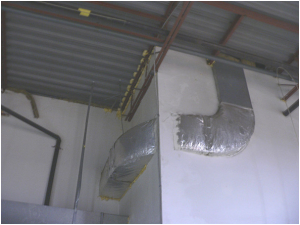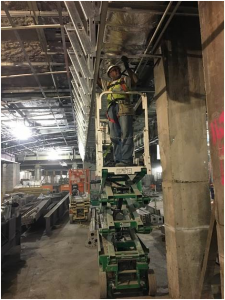We’re going to miss those movies where you escape the bad guys by crawling through the ductwork, but the truth is that cylindrical ducts are better. Today, cylindrical ducts of lightweight spirally-wound steel are the best choice for most installations, and here are a few of the reasons why.

Better duct joints
The spiral duct is easy to lift into position and quickly slots together using rubber or silicone gaskets. In addition to huge savings in time and labor, these joints flex in response to movement and leak less.
Good-quality fittings resist ozone, ultraviolet, and extreme temperature changes (as much as -94ºF to +302ºF).
You can take a look at the simplicity of a spiral ducting system at https://www.dustspares.co.uk/ductwork-parts/galvanised-ducting/galvanised-steel-spiral-duct.html.

Lower running costs
Without leakage, numerous other cost factors are minimized. That includes blowing, filtering, heating, and cooling. On top of the savings from energy efficiency, less ancillary equipment, such as blowers, may be needed.
There is another payoff from the ducts’ curved cross-section because it minimizes the ratio between the volume of air and the area of duct wall where friction occurs.
Air quality
Air leaks can also promote condensation in crawl spaces, promoting mildew and other organisms. As a result, non-spiral ducts have been implicated in “sick building syndrome”.
Humidity between 40 and 70% is recommended (see https://www.hse.gov.uk/foi/internalops/ocs/300-399/oc311_2.htm) but hard to achieve if the system is leaking.
Uniform air pressure
Pressure drop-offs in a spiral system are typically less from the moment it leaves the air handler. It has been proven that their profile minimizes both air resistance and turbulence.
As a result, energy efficiency is higher and energy bills are lower, but a more immediate advantage is that it eliminates the common problem of delivering the right volumes of air to all the different room outlets.
Noise mitigation
Noise in HVAC systems can be caused by pressure differentials, which are less in the spiral duct. The wall of rectangular ducts can vibrate like the skin of a drum between the stiffer corners, so they are more prone to resonate at certain flow rates.
In non-spiral systems, the pressure loss in certain areas usually leads to the installation of air duct boosters. In addition to the expense, more blowers mean yet more vibration and noise.
Noise can also be generated by their more cumbersome hangers.



